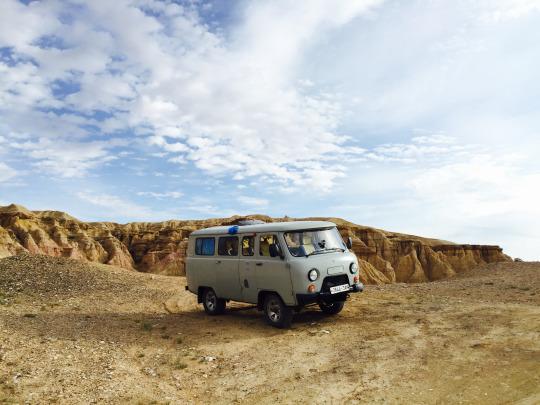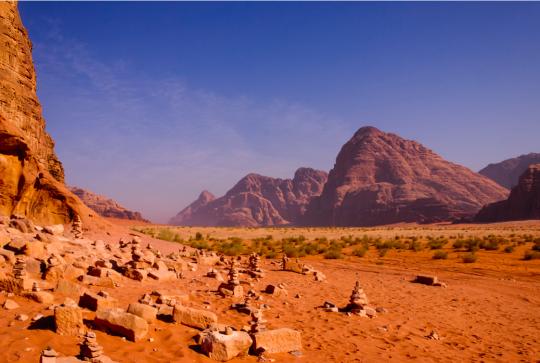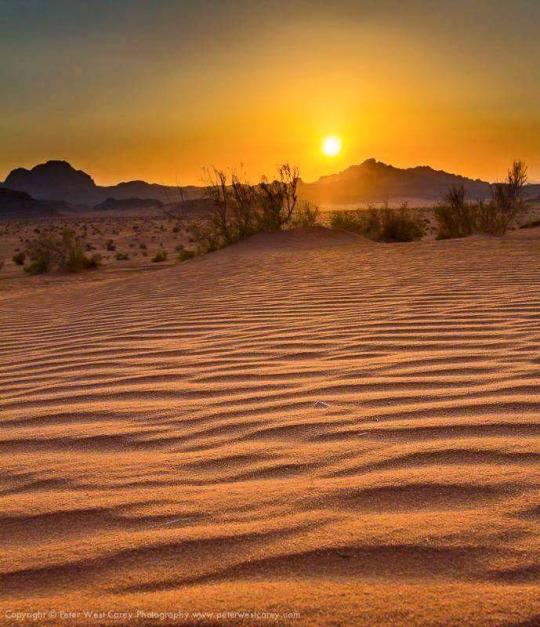Because you just never know when you’re going to need this knowledge. Trust.
For all the awesomeness, subscribe to my YouTube channel, HERE!
Because you just never know when you’re going to need this knowledge. Trust.
For all the awesomeness, subscribe to my YouTube channel, HERE!
This summer, I fulfilled a lifelong dream: visiting Mongolia. I’d read about Genghis Khan and his conquests for years and had always wanted to visit — a bucket list dream come true, if you will. I decided to do a road trip, as, 800 years after the Great Khan died, over one-third of the population still leads a nomadic lifestyle, living in gers (yurts), with their cattle (camels, cows, goats, and yaks) roaming the fields outside. Not much has changed over the years except for the method of transportation. In the older days, the ger would be wrapped up and put on a camel’s back for the move to fertile fields, while today, it is loaded up on a truck.
Related: The Ancient Trading Towns of Oman – An Explorer’s Dream

My chariot on the ultimate Mongolian road trip — an old-school, soviet-style van with no shocks and no seat belts. (Photo: Paula Froelich)
And, as there are few hotels outside of the capital, Ulaanbaatar, one must rely on the Nomad Code to survive. Which basically means rolling up on an unsuspecting family and asking to spend the night.
My guide, Timor from Intrepid Travel, explained.
“If someone comes to your door, you must give them food and shelter,” Timor said. “Or they might not survive. And the next time you are traveling, they will give you shelter — or you might not survive.”
Related: Travel Back in Time With the Bedouin of Jordan

Welcome. Yurts, or gers, like this are seen throughout the country. (Photo: Paula Froelich)
The first ger we rolled up to was outside of the singing sand dunes. It had been a long day and I had climbed a 50-meter-high sand dune. I was hungry, dirty, and tired. Thankfully, Ankhaa, the owner of the yurt, was hospitable.

Ankhaa in his ger, looking very Jean Paul Gaultier. (Photo: Paula Froelich)
“No man can live his life and emerge unchanged. He will carry, however faint, the imprint of the desert, the brand which marks the nomad; and he will have within him the yearning to return, weak or insistent according to his nature. For this cruel land can cast a spell which no temperate clime can match.” –T.E. Lawrence

Photo: Silvia/Flickr
Tucked away in the southern desert of Jordan is Wadi Rum, a vast valley cut into the sandstone and granite cliffs near Aqaba. Also referred to as the Valley of the Moon, Wadi Rum has been inhabited since prehistoric times — and has cast its spell on travelers throughout the ages.
The British officer T.E. Lawrence, later known as Lawrence of Arabia, passed through the area several times during the Arab Revolt of 1917, and described Wadi Rum as “vast, echoing, and god-like” — and it is. Spanning 280 square miles, Wadi Rum is full of silent history. The rocks in the Khaz’ali Canyon are covered in petroglyphs in Thamudic, the most ancient Arabian script, from the fourth century B.C. The sand dunes are marred only by camel footprints (and the occasional SUV track). It is the only place on earth I have been that can shock you with its open, silent emptiness.
Related: Traveling Back in Time With the Bedouin of Jordan
To truly experience Wadi Rum, spend the night in the privateCaptain’s Camp — a smaller version of the larger Captain’s Camp nearby — which will set you back $130 a night.

Photo: Captain’s Camp, Wadi Rum/Facebook
At night, the staff there prepares lamb and vegetables, slow-cooked for hours in a zarb — a traditional underground oven covered by sand — and then, around a fire, a musician sings under the stars. You can either sleep in a tent, or do what my crew and I did: simply pass out on the pillows surrounding the fire after stargazing for hours.
Spending the night with the bedouin of Wadi Rum is a magical experience. You are fully unplugged, there is no electricity or cell service, and there is no sound… other than what you yourself make. It makes you realize that in this noisy, frenetic world, the sound never heard is actual silence. It is as if Wadi Rum is Nature’s cathedral, outdoing any splendor man has created.
Related: Go Now: The New Seventh Wonder of the World — That’s Empty
Let Yahoo Travel inspire you every day. Hang out with us on Facebook, Twitter, Instagram, andPinterest. Watch Yahoo Travel’s original series, “A Broad Abroad.”